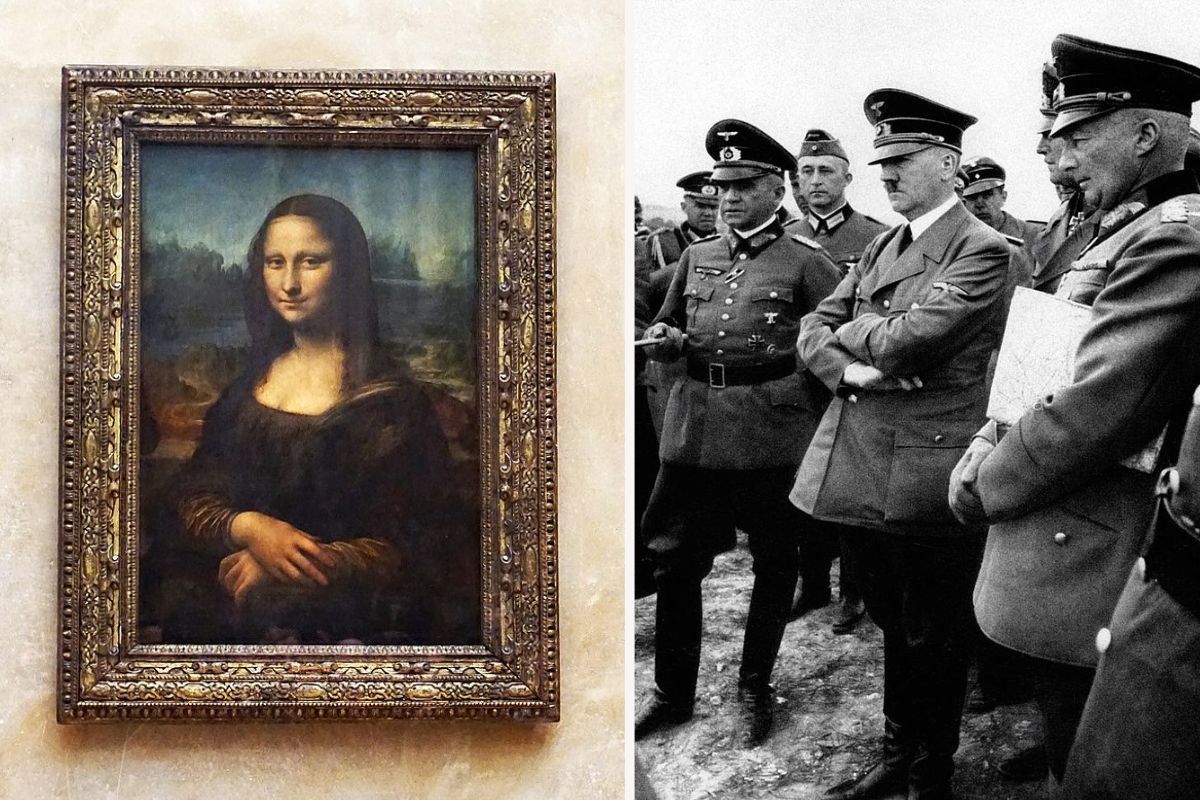How a clever French museum director secretly saved the Louvre's artwork from Nazi plunder
When the Germans arrived, they were shocked to find the Louvre emptied of its treasures.

The "Mona Lisa" and thousands of other art pieces were hidden around France during WWII.
People can often feel when war is brewing, and some take precautions just in case. A combination of political unrest, bombastic language and sabre-rattling from leaders, on-the-ground shifts in military presence or police activity and other indicators can signal that war is imminent, and in the 1930s, Jacques Jaujard saw the writing on the wall.
The deputy director of French National Museums foresaw Germany's invasion of France before the war even started, and he knew what was likely to happen when they arrived. The Nazis would plunder France's museums and loot the world's art treasures from the Louvre, but Jaujard wasn't about to let that happen. Major artworks started being evacuated from the Louvre in 1938, the year before the war even started.
- YouTubeyoutu.be
On August 25, 1939, Jaujard closed the Louvre for three days "for repairs" and put out and all-hands-on-deck call to pack up the thousands of pieces held in the Louvre—paintings, drawings, statues, vases, tapestries, and more—and put them in hiding. Museum curators, guards, students of the Louvre School, and even employees of a nearby department store helped with the effort.
It was no easy task. Transporting art treasures is an art in itself, since changes in humidity and temperature can damage them.
"They had to improvise, because nothing on such a grand scale had ever been attempted before — and the Louvre was, and remains really, probably the biggest museum in the world,” James Gardner, author of The Louvre: The Many Lives of the World’s Most Famous Museum, told the New York Post.
And it all had to be done in secret, without anyone who might inform the Germans catching wind of it. According to The Collector, between August and December 1939, two hundred trucks transported the Louvre's 3,690 paintings and thousands of statues and antiquities. The "Mona Lisa" was among the treasures evacuated, of course. She left the Louvre cushioned in velvet in an ambulance 10 days before the Germans arrived.

Throughout the war, the infamous smiling lady would be moved six times to abbeys and chateaux in the French countryside and a small museum in southern France, each time in a temperature-controlled armored van.
“The ‘Mona Lisa’ was like a resistance fighter who’s always trying to stay one step ahead from the approaching German army,” Gardner told the New York Post.
Items from dozens of other museums were also moved and spread throughout France, hidden in castles, chateaux, and abbeys in remote areas where they weren't likely to be discovered by Nazi invaders. Thousands of pieces all had to be categorized, catalogued, and dispersed.

When the Germans finally arrived at the Louvre, they were shocked to find it almost completely empty. They stared at frames with no art in them and some reproductions, such as a plaster copy of the Venus De Milo.
Thankfully, Jaujard and the Louvre's art also had a German ally on their side. Count Franz Wolff-Metternich was a German art historian appointed by Hitler to oversee France's art collection. Metternich, however, was not a member of the Nazi party and apparently did not want to see the world's greatest works of art fall into the hands of art-loving war criminals like Hermann Goering and Joseph Goebbels. Jaujard wrote in his diary that Metternich almost seemed relieved to find the Louvre empty when he arrived in 1940. Throughout the war, he used every means at his disposal to keep the art pieces safe while managing to avoid suspicion that he was trying to prevent them from being looted by the Nazis.
- YouTubeyoutu.be
The clandestine conspiracy to keep the Louvre's treasures safely away from Hitler's clutches worked. Though the Nazis stole thousands of pieces of art during the war, largely from Jewish families' private collections, they were unsuccessful in finding and taking the art that Jaujard and his colleagues had hidden.
In 1944, Jaujard was appointed Director of the French Order of Arts and Letters and helped establish the French Commission on Art Recovery. He would later become Secretary General of the Ministry of State in charge of cultural affairs. For his services during the war, he was awarded the Medal of the Résistance and named a Commander of the Legion of Honor.
Not too shabby for a man who dedicated his life to preserving and protecting the world's most beloved artwork.





 CEO Rob Dance holds up a whipe board with his culture philosophy.
CEO Rob Dance holds up a whipe board with his culture philosophy.  A heart shaped neon sign in the dark
Photo by
A heart shaped neon sign in the dark
Photo by